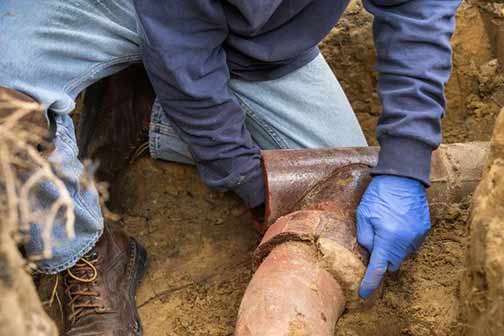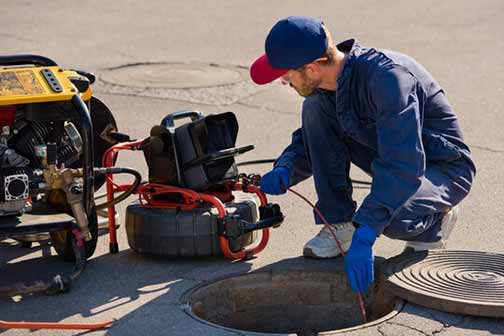
Plumbing issues in your home, such as a broken or clogged sewer line, are not just a threat to the health, safety, and comfort of your household, but they can impair the structural integrity of your home and constitute a major drain on your finances, says Ratner Maintenance.
Yet most sewer line issues start as small problems that are ignored and allowed to go on for too long. That is because the sewer line is buried in the ground and out of homeowners’ sight (and mind) most of the time.
As a result, the sewer line doesn’t get the kind of attention it deserves. In most cases, problems in the sewer system are found after they have reached an advanced stage and have already done some damage to the building or plumbing.
The reality, however, is that most sewer line issues in your home can be prevented. To be able to do this, though, you need to make some small but highly effective adjustments to the way you use and maintain your home’s sewer system.
4 tips for preventing sewer line issues
These four tips will help you avoid disruptive and costly sewer line problems in your home.
Don’t use the sink as a trash can
It is vital to limit the amount of food that gets into your drain. Small amounts of food waste that find their way into your drains will not hurt your sewer line. However, some food waste should never enter your drains. That includes coffee grounds, eggshells, starchy foods (rice, mashed potato, potato peels, pasta, and flour), and stringy veggies (celery, etc).
Don’t dump grease, oils, and fats into your drains
It is hard to find a convenient way to get rid of used grease. Sometimes, the easiest way is to dump it into the sink. That is a mistake. Although soft and runny in your warm kitchen, FOG (fats, oils, and grease) solidifies inside the sewer line. They can interact with soap and other contents of the sewer line to form hard, insoluble masses (fatbergs) that block the sewer line. Fatbergs pose a danger to your sewer lines and can also damage the municipal sewer system.
Don’t dispose of non-biodegradable items in the toilet
Even if their labeling says “flushable,” avoid trashing non-biodegradable items (paper towels, sanitary products, diapers, wipes, dental floss, etc.) in your toilet. Major flooding in homes and cities is often caused by balls of so-called flushable materials inside the sewer system. Nothing but water, toilet paper, and human waste should ever enter your toilet.
Avoid chemical drain cleaners
Chemical drain cleaners are cheap, quick, and easy to use. But you pay for that low price and convenience with the high cost and inconvenience of the problems it will cause in your sewer line. Chemical drain cleaners use intense heat as their primary method for removing blockages from a clogged pipe. This process damages the sewer line. The chemicals also linger inside your sewer line, slowly weakening and corroding the pipes.

4 proactive maintenance tips for preventing sewer line issues
With these four tips, you can stay ahead of problems in your sewer line
Regularly inspect your sewer line
Regular sewer line camera inspections help you detect problems at their early stages before they get the chance to hurt your plumbing and wallet. These inspections are in two forms: monthly surface-level inspections by the homeowner and in-depth yearly inspections by a professional plumber. Having a professional plumber camera inspect your sewer line is not a cost but an investment in the function and longevity of your sewer line.
Maintain your sewer line with annual cleaning
In addition to inspecting the sewer line yearly, you want to have it professionally cleaned. Instead of waiting until your sewer line is blocked before you clean it, you should clean the sewer line to keep it from becoming blocked. You may do this either by hydro jetting the sewer line or via a second method known as sewer rodding. Rodding or jetting your sewer line once a year will help it perform optimally.
Remove nearby tree roots
Trees and shrubs root threaten your sewer line. They can penetrate the line or cause it to shift out of position. If there are tree roots near the location of your sewer line, you may want to remove the roots or the entire tree. A permanent way to fix this problem without cutting down your trees is to install tree root barriers.
Know the signs of problems in your sewer system
Sewer line problems in your home rarely happen without some telltale sign. If you know how to pick up on these signs, you can stop the problems before they cause a plumbing emergency in your home. Ask your plumber to explain the signs of an imminent sewer line problem in your home.
Finally, to keep your sewer line in top shape every time, you need the expertise of a reliable and experienced plumber. Ideally, you want a plumber who offers professional drain cleaning services with sewer camera inspection, hydro jetting, and sewer rodding as some available options.

